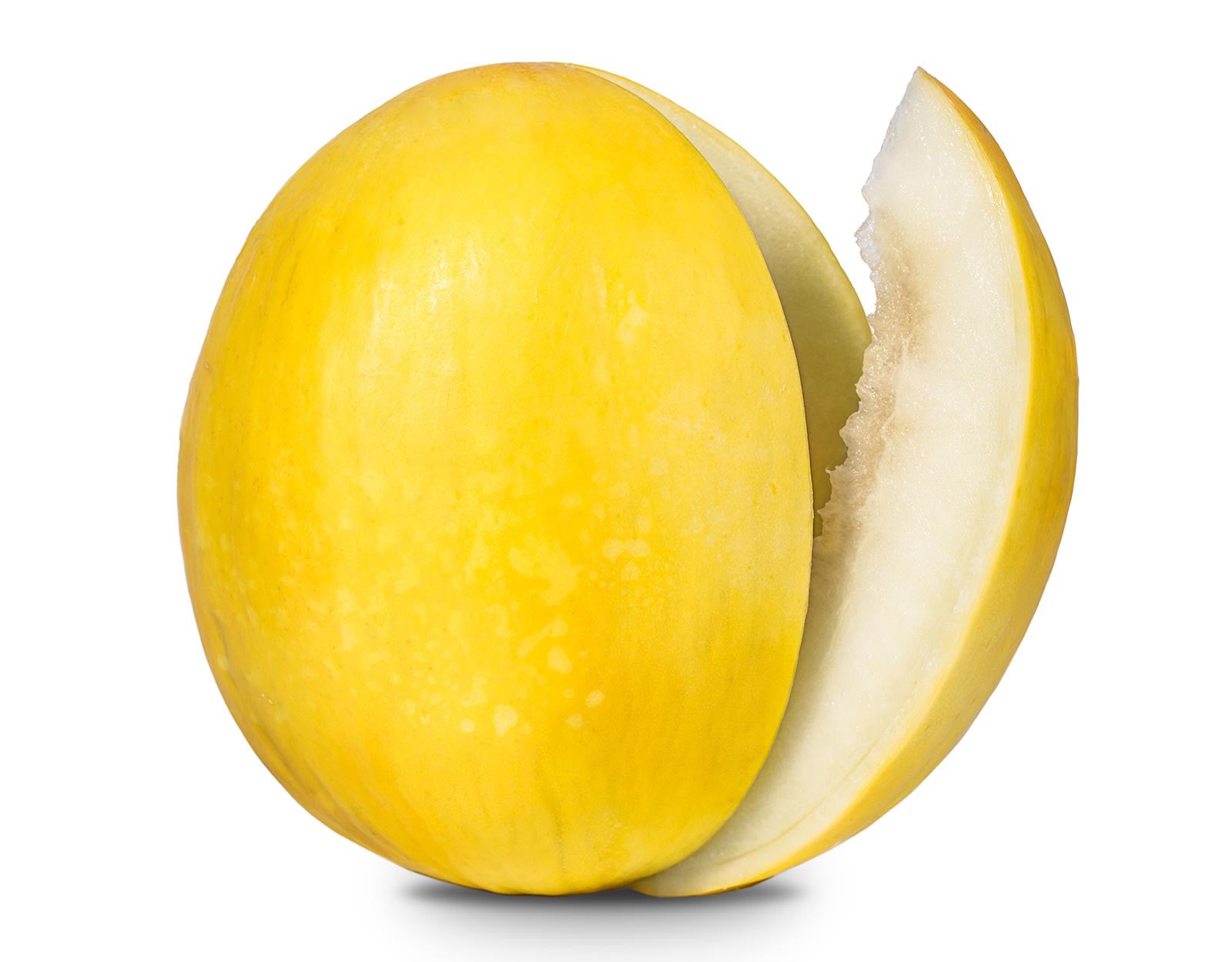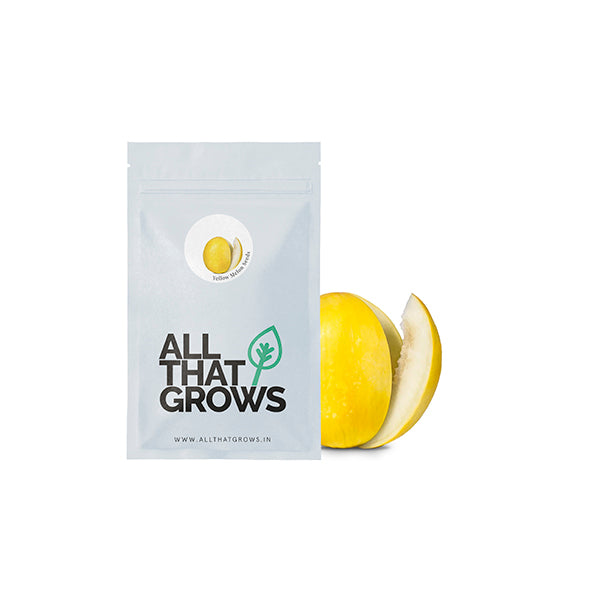



- SOWING
TIMEFeb - March
- Sowing
DistancePLANT TO PLANT 6 FT LINE TO LINE 2 FT
- Fruit
Weight1.5 - 2 Kgs
- Fruit
ShapeOblong
- Days to
maturity105-110 days
- Details
- How to sow
- Reviews
This gorgeous looking, sweet-tasting, and healthful fruit belongs to the gourd family! Hard to believe, but yes the Melons or Kharbooza (urdu word) as they are popularly known in the Indian subcontinent and Pakistan are very popular summer fruit which find themselves vying with the watermelon in the middle of summer. They usually grow in semiarid conditions and are cultivated for their inner flesh. The origin of this fruit which the West refers to as Cantaloupe dates back to Egypt's Nile Valley, about 2000 B.C. Historians sometimes also suggest that along with Egypt the muskmelons were also being cultivated in Greece, India, Persia, and Armenia. Today, they are widely consumed and can be found in almost every part of the world. What makes this Honey-like sweet fruit so refreshing and bountiful? The enormous amount of naturally occurring nutrients such as Vitamin A, Vitamin C, Potassium, Beta-carotene, Folate, and other minerals and micronutrients. The health benefits of the Melon are also many. Melons are notably great for smokers to fight against the active intake of carcinogenic substances. There is a compound called Adenosine which is found in abundance in the Melons which is known to have blood-thinning properties and hence is great for people with high blood pressure. Recommended to maintain healthy skin, weight, and maintaining optimal eyesight, Melons can safely be called a power fruit!
Eat them raw, make a dessert (sorbet) or simply bite into a nice chunk of the Melons, whatever and however, you have them, you will love every pinch of them! So start growing them in your gardens now.
Planting instructions
Melons have a shallow root system, mulches helps retain soil moisture and maintain even soil temperatures. Set up the bed by turning the soil under a depth of 8 inches.
Direct sowing is recommended, but to get a head start, you can start melons indoors 3-4 weeks before the last frost. Sow 2-3 seeds per pot.
Sow seeds ½ inches deep in manure.
Seedlings emerge in 7-14 days.
Note- Before planting in the garden, saplings need to be “hardened off” so grow them indoors first. Do not move the vines, they can be easily injured.
Growing Requirements
watering
Keep plants well-watered during the growing season. Maintain the ground moist but not saturated.
pests
The following pests are known to attack the yellow melons - Aphids, Cucumber Beetles, Squash Vine Borer Moths, Fusarium Wilt, Anthracnose, Cabbage looper, Cutworms.The above mentioned pests may cause the following symptoms - Small, yellow-brown spots, irregularly shaped or circular dark brown lesions on leaves, fruits are small and pale in color, Large or small holes in leaves etc.
soil
They prefer warm, well-drained, loamy soil, high in organic matter with pH 6.5 to 7.5.
spot
The fruit requires a full sun.
temperature
Melons grow best in temperature that ranges between 25-28°C [77-82°F].
how to harvest
Allow your melons to ripen along the vine.
Harvest when the fruits vary from greenish to yellowish or tan and they break out easily from the vine.
They are ready to harvest when their undersides turn from white to a creamy yellow. The tendrils closest to the fruit will also turn brown and dry up. The skin will get hard at the harvest time.
Tastes best when eaten at the room temperature.
Melons may be stored in the refrigerator for a short time. They will lose their flavor and color if stored for too long.

Customer Reviews
The productiveness of any seed we sell is subject to your local climatic conditions*, the sowing method you adopt, and your commitment to the planting process. We give no warranty, expressed or implied, and are in no way responsible for the produce.
Please note that all our seasonal recommendations/ sowing information is as per the local climatic conditions. *For more information on the optimum conditions required for growing seeds in your region, please contact us at, hello@allthatgrows.in or Whatsapp us at, +91 8544865077
Questions & Answers
Have a Question?
Be the first to ask a question about this.




Yellow Melon Seeds
Seed Type : Non-Hybrid, Open Pollinated and Non-GMO
Sowing time: February to March
Fruit Picking: After 105-110 days from sowing
Fruit Shape: Oblong
Fruit Color: Yellow
Average Weight: 1.5-2.0 kgs
Flesh Color: White
Sweetness: Very sweet and crisp
This gorgeous looking, sweet-tasting, and healthful fruit belongs to the gourd family! Hard to believe, but yes the Melons or Kharbooza (urdu word) as they are popularly known in the Indian subcontinent and Pakistan are very popular summer fruit which find themselves vying with the watermelon in the middle of summer. They usually grow in semiarid conditions and are cultivated for their inner flesh. The origin of this fruit which the West refers to as Cantaloupe dates back to Egypt's Nile Valley, about 2000 B.C. Historians sometimes also suggest that along with Egypt the muskmelons were also being cultivated in Greece, India, Persia, and Armenia. Today, they are widely consumed and can be found in almost every part of the world. What makes this Honey-like sweet fruit so refreshing and bountiful? The enormous amount of naturally occurring nutrients such as Vitamin A, Vitamin C, Potassium, Beta-carotene, Folate, and other minerals and micronutrients. The health benefits of the Melon are also many. Melons are notably great for smokers to fight against the active intake of carcinogenic substances. There is a compound called Adenosine which is found in abundance in the Melons which is known to have blood-thinning properties and hence is great for people with high blood pressure. Recommended to maintain healthy skin, weight, and maintaining optimal eyesight, Melons can safely be called a power fruit!
Eat them raw, make a dessert (sorbet) or simply bite into a nice chunk of the Melons, whatever and however, you have them, you will love every pinch of them! So start growing them in your gardens now.
Seed Type : Non-Hybrid, Open Pollinated and Non-GMO
Sowing time: February to March
Fruit Picking: After 105-110 days from sowing
Fruit Shape: Oblong
Fruit Color: Yellow
Average Weight: 1.5-2.0 kgs
Flesh Color: White
Sweetness: Very sweet and crisp
- SOWING
TIMEFeb - March
- Sowing
DistancePLANT TO PLANT 6 FT LINE TO LINE 2 FT
- Fruit
Weight1.5 - 2 Kgs
- Fruit
ShapeOblong
- Days to
maturity105-110 days
Planting instructions
Melons have a shallow root system, mulches helps retain soil moisture and maintain even soil temperatures. Set up the bed by turning the soil under a depth of 8 inches.
Direct sowing is recommended, but to get a head start, you can start melons indoors 3-4 weeks before the last frost. Sow 2-3 seeds per pot.
Sow seeds ½ inches deep in manure.
Seedlings emerge in 7-14 days.
Note- Before planting in the garden, saplings need to be “hardened off” so grow them indoors first. Do not move the vines, they can be easily injured.
Growing Requirements
watering
Keep plants well-watered during the growing season. Maintain the ground moist but not saturated.
pests
The following pests are known to attack the yellow melons - Aphids, Cucumber Beetles, Squash Vine Borer Moths, Fusarium Wilt, Anthracnose, Cabbage looper, Cutworms.The above mentioned pests may cause the following symptoms - Small, yellow-brown spots, irregularly shaped or circular dark brown lesions on leaves, fruits are small and pale in color, Large or small holes in leaves etc.
soil
They prefer warm, well-drained, loamy soil, high in organic matter with pH 6.5 to 7.5.
spot
The fruit requires a full sun.
temperature
Melons grow best in temperature that ranges between 25-28°C [77-82°F].
how to harvest
Allow your melons to ripen along the vine.
Harvest when the fruits vary from greenish to yellowish or tan and they break out easily from the vine.
They are ready to harvest when their undersides turn from white to a creamy yellow. The tendrils closest to the fruit will also turn brown and dry up. The skin will get hard at the harvest time.
Tastes best when eaten at the room temperature.
Melons may be stored in the refrigerator for a short time. They will lose their flavor and color if stored for too long.



 Sign In
Sign In






